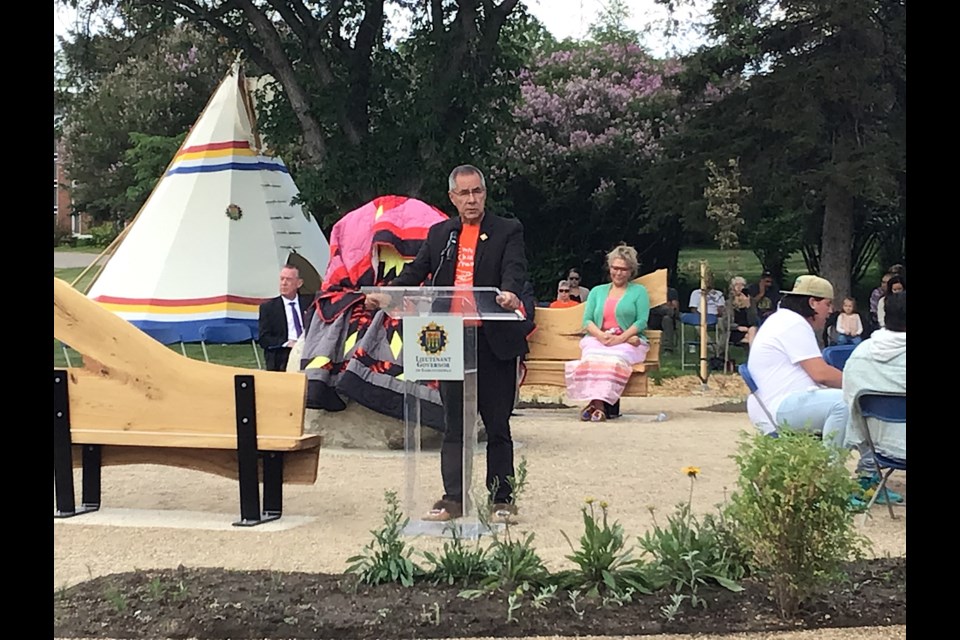REGINA — National Indigenous Peoples Day saw the dedication of a new memorial on the grounds of Government House.
Lt.-Gov. Russ Mirasty, the government of Saskatchewan and Indigenous leaders, elders and residential school survivors were on hand for the unveiling of the Saskatchewan Residential School Memorial Tuesday afternoon.
The memorial, located on the Government House grounds towards the west, will be open to members of the public as a place to visit and to reflect. It fulfills the Truth and Reconciliation Commission Call to Action Number 82, recommending the installation of a residential school memorial in each capital city to honour the children and their survivors.
Despite this call to action, in his remarks Mirasty noted there was only one such memorial constructed at the provincial level, in Newfoundland and Labrador. “I wondered then, I still wonder today, why more hasn’t been done across other governments and territories.”
Mirasty noted the province had been supportive of the memorial, and he had reached out to elders and knowledge-keepers. The answer he got, resoundingly, was it was needed.
“We need a lasting place where people can remember and reflect and to pray, and to think about what residential schools did to our country but specifically to Indigenous people, and those impacts continue to this very day.”
Through those discussions, it was decided all the elements of the site would come from nature, and all the plants would be central to Saskatchewan.
It was particularly important for the centrepiece monument to be a natural element. The centrepiece was a large rock selected by the lieutenant governor from Treaty 4 territory. The large stone came from the north side of the Qu’Appelle Valley.
Engraved on one side of the stone was a plaque showing the map of Saskatchewan, and the locations of its residential schools.
The large stone was placed in the middle of the memorial site. Just in front of it was placed a smaller smudge stone to be used for ceremonies and smudges.
The plants and natural elements were placed in a circular pattern around the memorial, which Mirasty said was meant to signify the world view of seeing and understanding things around us. Also included are benches made out of reclaimed wood from the property.
The other important element of the site was that it be a place of learning.
“That was a very important component that was emphasized time and time again. We have that experience, we have that lived experience either as individual or a family member that we know, or community members that we know, and we felt as I said earlier that we need to share that knowledge, … but there’s a broader understanding of residential schools and their impact.”
The idea is that the monument be more than a physical structure, but also have a spiritual aspect that was very important.
“People will come here and already have prayed here at this site,” said Mirasty.
Elder Ted Quewezance, himself a residential school survivor, assisted Mirasty in unveiling the stone monument. He said it was a special day.
“I reach out to you in a very positive way. Support our survivors, support our community, support the families of the missing children that we are finding across the country … What you see here behind us is something that’s going to be for the future generations of people of this province. Why it’s here, what it’s about, it’s going to be history.”
On hand for the ceremony were government officials including Minister Responsible for First Nations, Métis and Northern Affairs Don McMorris, who provided remarks on behalf of Premier Scott Moe.
"It isn’t just about recognizing the past," said McMorris. "But it’s more importantly learning from the past. And that certainly what was implemented within this monument. It is for people that attended residential schools to come here and reflect and heal, and for so many of us that weren’t anywhere directly impacted to learn from the experience from those elders and those people who had this experience in their life not brought on themselves, but forced into it.”




